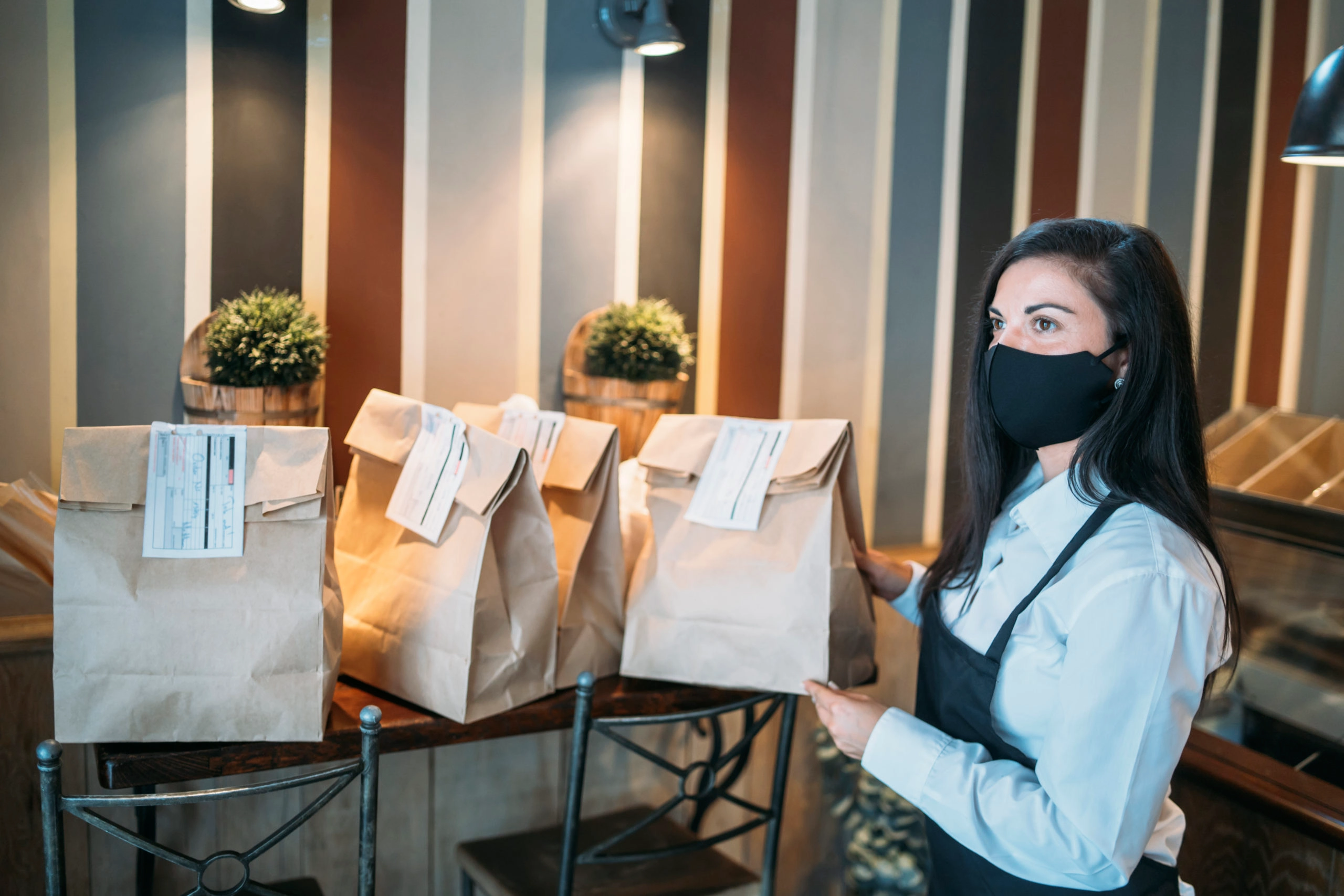When searching for a Delivery Management Software, you need to be armed with knowledge to make the right choice. While automating your last-mile is crucial, not all software were created equal – and some may lack key features that your operations are in dire need of. It is thus important to know what a Delivery Management Software should be able to offer, and how its features and configurations will help enhance your operations.
If you are experiencing low customer satisfaction due to slow deliveries, or high overhead costs due to inefficient utilization of fleet, you need to focus on acquiring a software that integrates Order Clubbing and Driver Pooling – which are the two highly powerful features we will be focusing on in this blog.
Order Clubbing
The Order Clubbing feature is indispensable to increase speed of service and efficiency of On-demand delivery as it enables you to assign two or more orders to one driver, to drop off in a single trip. The orders can be clubbed from the same store (and if the Drivers Pooling feature is activated in parallel, they can also be clubbed from multiple stores within a set radius, but we will get to that later). Let’s go through the four components which the system needs to find the perfect driver when clubbing orders.
- Configuring the Dispatch Waiting Time
To ‘club’ two or multiple orders, you must first configure the time frame for grouping orders together – or ‘Dispatch Waiting Time’. This time frame will differ depending on your business industry or operational requirements. Restaurants generally calculate clubbing from the time the last order was placed. If for instance the time configured is 10 minutes, the system will wait for 10 minutes from the moment order A has been placed, giving other orders a chance to come through before dispatching. If order B is placed within this time range, the system will then add another 10 minutes for potential new orders to come through (provided it is in adherence to your SLAs) before dispatching.
Grocery stores on the other hand calculate the Dispatch Waiting Time from the moment the first order was placed. If you have configured the system to wait for 2 hours in between order placements – there will be no additional time added. This means that once order A was placed, there is no more than a 2-hour buffer time for any new orders to come through and be clubbed before dispatch (provided their drop off location is within the set radius, and their quantity is in line with your configurations).
- Configuring the distance
Once the Dispatch Waiting Time has been set, the Delivery Management Software must consider the distance between the multiple drop-offs of clubbed orders. Solely relying on the Dispatch Waiting Time might cause delay in deliveries if the drop-off locations are too far from one another. Therefore, configuring the maximum distance along with the maximum amount of time between drop off locations is necessary.
- SLA compliance
Some Dispatch Management Software miss taking into consideration the time spent at the customer’s location. This includes the time a driver spends finding parking space, taking the stairs or the elevator, collecting cash payments from customers, etc. These seemingly minor details add up and end up delaying the next clubbed delivery – highlighting the importance of integrating a software that takes time spent at the customer’s location into consideration.
Your Delivery Management Software should be able to make logical driver selections, with SLAs preceding any other feature – as they are a key tool to measuring your service performance. Many Delivery Management Software include the Order Clubbing features yet only take time or distance configurations into consideration, failing to adhere to SLAs.
Let’s assume you have configured the following SLAs:
- SOS: Speed of service: 45 minutes
- Maximum orders to be clubbed: 3
- Distance between orders in minutes: 5 minutes
3 Orders have been placed based on the aforementioned criteria. Technically speaking, they should be clubbed and assigned to an available driver. However, once the system has calculated the preparation time needed for all 3 orders along with the time needed for the driver to reach the pick-up location, deliver the first order and other SLAs, it concluded that the last order will be delivered in 55 minutes instead of 45. While all the criteria matched the Order Clubbing configurations, the system will still assign the last order to another driver to comply with your business’ SLAs.
Advanced software will even allow you the flexibility to deactivate the SLAs compliance when needed. This might be particularly useful if one or more of your stores are experiencing unusually high volumes during the holidays.
- Capacity verification
Capacity refers to the maximum number of orders one driver can delivery in a single trip, as well as the number of bags or boxes they can transport. Since the clubbing of orders increases the quantity transported by each driver, your Delivery Management Software should automatically carry out a capacity check to verify whether the vehicle can transport the assigned orders. The system should thus enable you to configure the maximum number of bags and boxes to be carried by a motorcycle driver in one single trip. Should the quantity increase, the system will assign a car driver instead.
Depending on business types, fleet requirements may differ. It is therefore necessary for your Delivery Management Software to allow you to configure the Order Clubbing feature within teams. Teams can be formed based on employment type (full timers or freelancers), vehicle type, 3pLs partners, aggregators, or other criteria of your choice. If you choose to create teams of drivers to whom you assign the deliveries of one or multiple stores, you can proceed to activate the Order Clubbing feature for them as well.
Drivers Pooling
When looking to increase driver utilization rate, the most effective way is activating the Driver Pooling feature as well as the Order Clubbing one – so make sure your software is equipped with both. Driver Pooling, however, is only applicable if you run multiple stores. It is unmatched when it comes to facilitating an efficient use of your fleet as it enables you to spread out your drivers’ duties over two or more stores.
You can configure stores to be grouped into a cluster and define its limit with a specific radius – provided the stores are geographically close to one another and require On-demand delivery. Each cluster encompasses multiple stores – sometimes with different purposes such as a pharmacy, a restaurant, and grocery store (such as aggregators).
Since store branches experience different delivery volumes and peak times, store A may be experiencing a high demand while store B’s fleet team has an abundance of free time in between orders. In such cases, the Drivers Pooling option helps balance out the workload, maximize fleet utilization and increase Store A’s speed of service. If you run an aggregator or third-party delivery business, this would enable you to better serve multiple brands during peak times – provided their branches are located within one cluster.
Drivers Pooling is also applicable to teams. Let’s assume that one of your clusters is made up of multiple restaurants and one grocery store. You can thus choose to assign team A – made up of drivers with motorcycles – for the entire cluster excluding the grocery store. Team B – exclusively made up of cars drivers – will cover the grocery store as it has the capacity to transport larger quantities.
Another example of team Drivers Pooling efficacy would be for a store that generally experiences low volumes. Knowing that it would be a waste of resources to dedicate an entire team of drivers to it, the solution could thus be assigning it to a team which already delivers for the entire cluster. You can also allocate a team of freelance drivers to that store, allowing your own fleet teams to serve busier ones.
As analyzed, the Order Clubbing and Drivers Pooling features are must-haves. When both are activated together, you can significantly increase your driver utilization rate. Drivers from multiple branches or teams can pick up and drop off several orders in one trip, increasing speed of delivery and maximizing productivity. You will most likely end up fulfilling a higher number of deliveries with a smaller fleet – leading you to cut overhead costs.
Lyve nGage is an easy to integrate, user-friendly and innovative Delivery Management Software designed to streamline On-demand operations. Its highly configurable features and advanced algorithm makes it a bespoke tool for businesses that require On-demand delivery – regardless of their industry or size. nGage increases the overall efficiency of the final mile, making it smoother and hiccup-free.
Read our case study to find out how one of the largest fast-food chains globally have improved their Automated Dispatching efficiency by 94% with the use of our Order Clubbing feature.
Click here to request a free demo. Our team of experts will guide you through the nGage software, explain its features and demonstrate its ability to increase your speed of service along with the drivers’ utilization rate.



